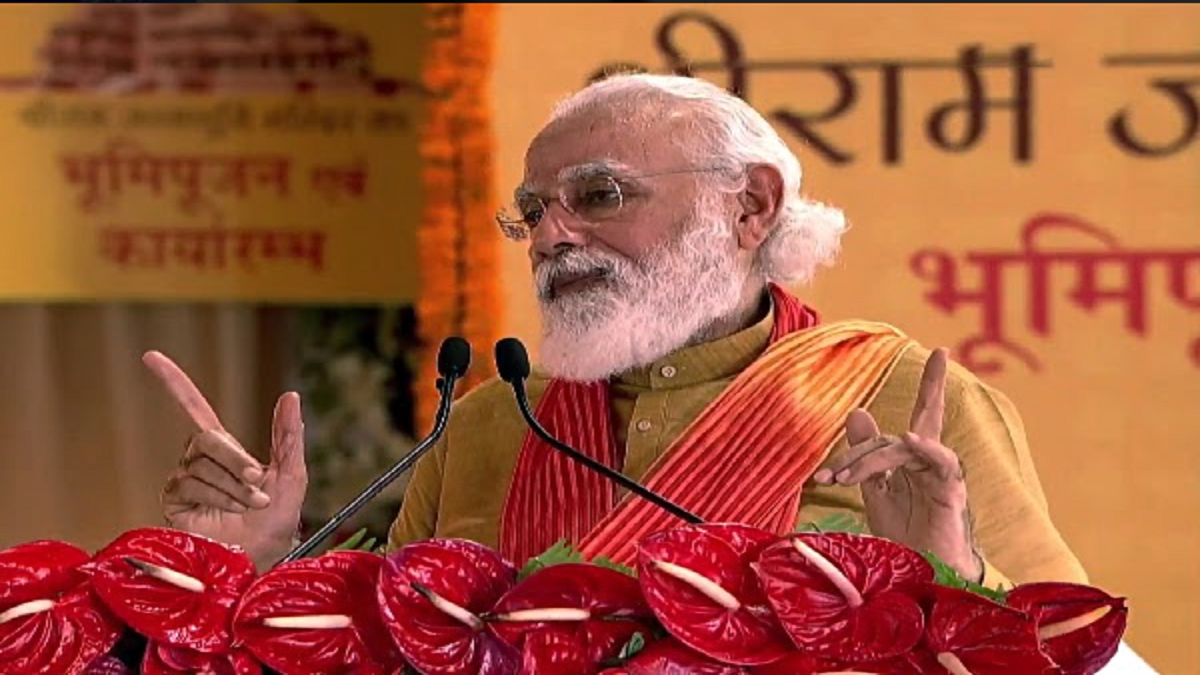


At Ayodhya at the shilanyas ceremony of the Ram temple, Prime Minister Narendra Modi delivered a remarkable speech. It was delivered from a religious platform and was steeped in religiosity, but transcended religion to enunciate a philosophy that is best described as the Indian way of life. At the core of this, according to the Prime Minister, is Lord Ram, a cultural and civilisational icon who cuts across all barriers including national boundaries. In the speech, the Prime Minister drew out the contours of what he described as “Ram Rajya”, which is however not something mythical and divorced from presentday realities. This vision of Ram Rajya is modern, forward looking and evolving with the times. Lord Ram is for movement, he is for modernization, the PM said and added that he was using the word “modern”—adhunik—consciously. He said, “Ram Mandir will become the modern symbol of our traditions” apart from being a symbol of our “saswat astha” (trust) and “rashtriya bhavna”, which can be roughly translated as nationalism or nation first—something the so-called left-liberal forces have been deriding, but is one of the core values of the Sangh Parivar. Significantly, unity found constant mention in the Prime Minister’s speech—this is a “project to unite the nation”; the aim is to unite “nar” with Narayan (man with God), and “bartaman” with “ateet” (present with the past), “swa” with “sanskar”. Mention was also made of the temple symbolising “unity in diversity”. At the level of governance, the aspiration is to reach an ideal state—“Ram Rajya”—by loving everyone equally, while taking special care of the poor. This is something the Prime Minister has been talking about ever since he has taken office, first in 2014 and then in 2019.
So it’s natural that to reach a state of Ram Rajya in these modern times it’s essential to follow the path of “sabka saath sabka vikas”. Significantly, different groups such as Dalits, backward, tribals, all found a mention in his speech; as did Valmiki, Tulsidas, Kabir, Nanak and Gandhi, apart from Lord Buddha. So did a host of other people and countries, to show how the legend of Lord Ram captured imagination and influenced lives in different parts of the world. Moreover, atma vishwash (confidence) and atma nirbharta (self sufficiency) are also needed to achieve a state of Ram Rajya, just as wearing masks is necessary to maintain maryada at a time when the coronavirus pandemic has got the world in its grip. In other words, the values that Lord Ram stands for found a modern and topical interpretation in the PM’s speech. While talking of how the temple was a fruit of satya, astha, balidan (truth, trust and sacrifice) and a gift to a lawloving India, he did not forget to mention the economic benefits that the Ram temple would bring to Ayodhya. Significantly, not for once did the Prime Minister mention the word Hindu, Hinduism or even Sanatan Dharma in his speech, although the shilanyas itself was replete with religious rituals. On the whole, the Prime Minister spoke about his vision for a modern India, which is inclusive, sensitive to others’ needs, merciful, friendly, while also confident and self-assured— an India that does not feel the need to hide its religious moorings, not anymore. It is here that Modi’s “Indian way of life” is significantly different from Nehru’s “idea of India”. It is about India regaining its pride in its civilisation and culture, and being an example to the rest of the world, but with humility. And that is indeed the way forward for India as a nation.